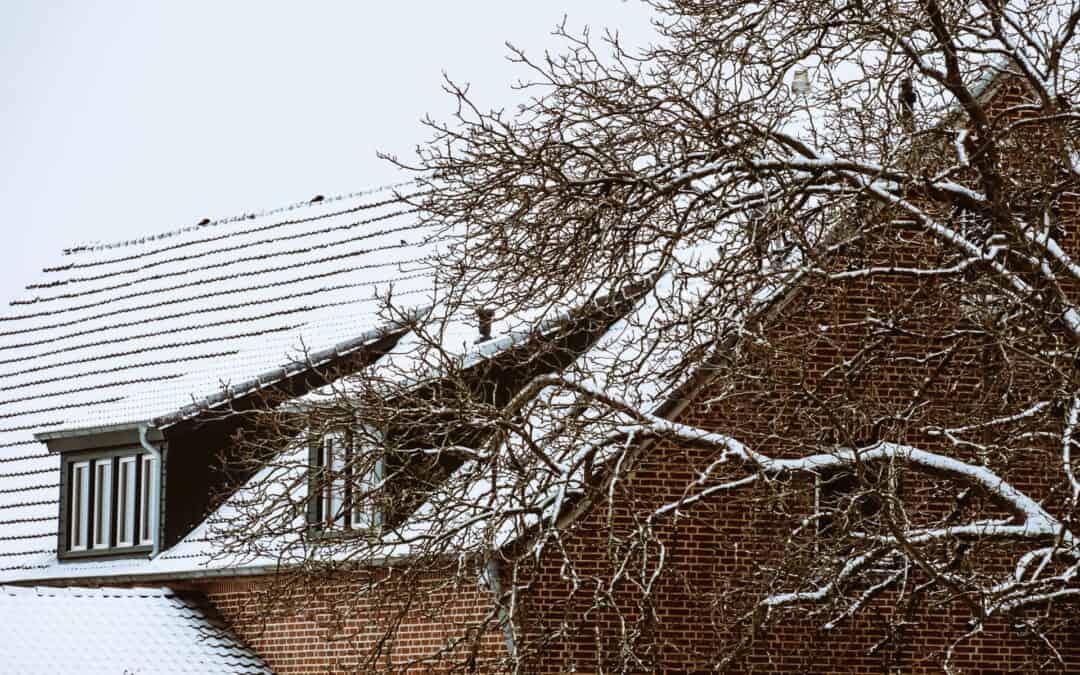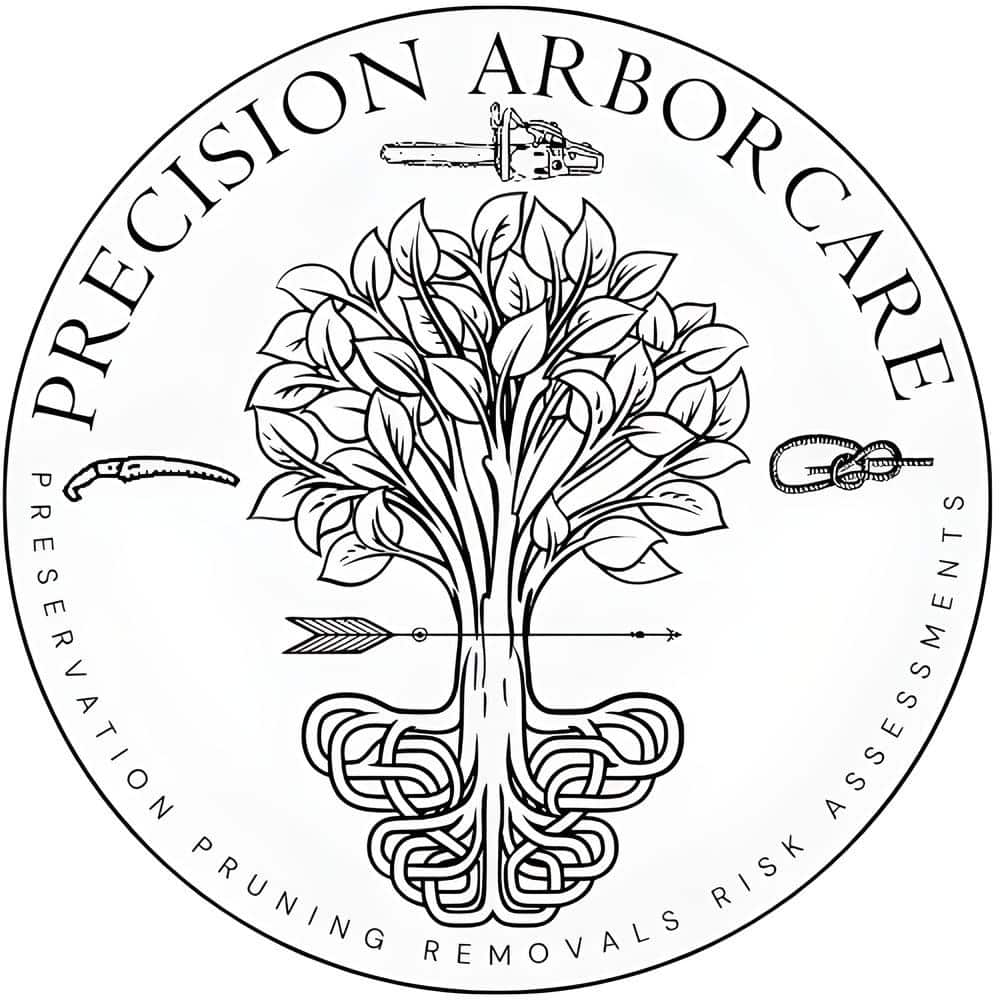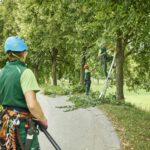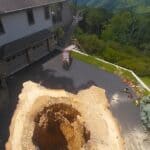Winter brings unique challenges for trees, especially when temperatures drop and storms hit. Preparing your trees for the cold season is crucial, and while many may assume trees handle winter naturally, they benefit from a little help. Without the right preparation, trees can face damage, disease, and even death. Protecting trees from Asheville’s winter weather ensures they thrive year after year.
Learning how to prepare trees for Asheville’s winter involves a few key steps. These steps ensure trees remain healthy and withstand the freezing temperatures and icy conditions.
Understanding Asheville’s Winter Weather for Trees
Understanding how trees respond to cold weather is essential when preparing them for winter. A trusted arborist knows that winter can stress trees by freezing their roots and causing branches to break. Trees that are weakened by the summer’s heat or pests become even more vulnerable to winter damage. For instance, large trees may appear sturdy, but if they haven’t received proper care, winter winds and snow can weaken or even break their branches.
Experience shows that trees left unprotected in cold climates may experience frost cracks, ice damage, or nutrient deficiencies. Tree owners should always be aware of the following:
- Winter drought can dry out the roots.
- Cold temperatures can cause bark splitting or frost cracks.
- Heavy snow and ice can lead to broken branches.
Why Winter Tree Preparation Matters
Winter tree preparation matters because it directly affects the tree’s health and lifespan. Trees that are properly prepared for winter will be more resilient, grow better in the spring, and avoid significant damage during cold snaps. Not only does winter preparation protect trees, but it also saves property owners from costly repairs or the need to remove damaged trees.
There are many reasons to prepare trees for winter:
- It prevents root damage from freezing temperatures.
- Helps young trees survive harsh winters.
- Reduces the chance of branches breaking under snow or ice.
1. Inspect Trees for Structural Damage
Before winter begins, inspecting your trees for any existing damage is essential. Cracks, broken limbs, or signs of disease can all worsen in the winter, leading to serious damage. Arborists recommend a thorough inspection of the tree’s structure to check for vulnerabilities that might not withstand Asheville’s winter.
Damaged trees are more likely to fall during a storm, and fallen trees can cause damage to homes or property. Consider the following steps when inspecting trees:
- Look for cracks in the bark or signs of pest infestation.
- Check for limbs that seem weak or broken.
- Identify any trees leaning or appearing unstable.
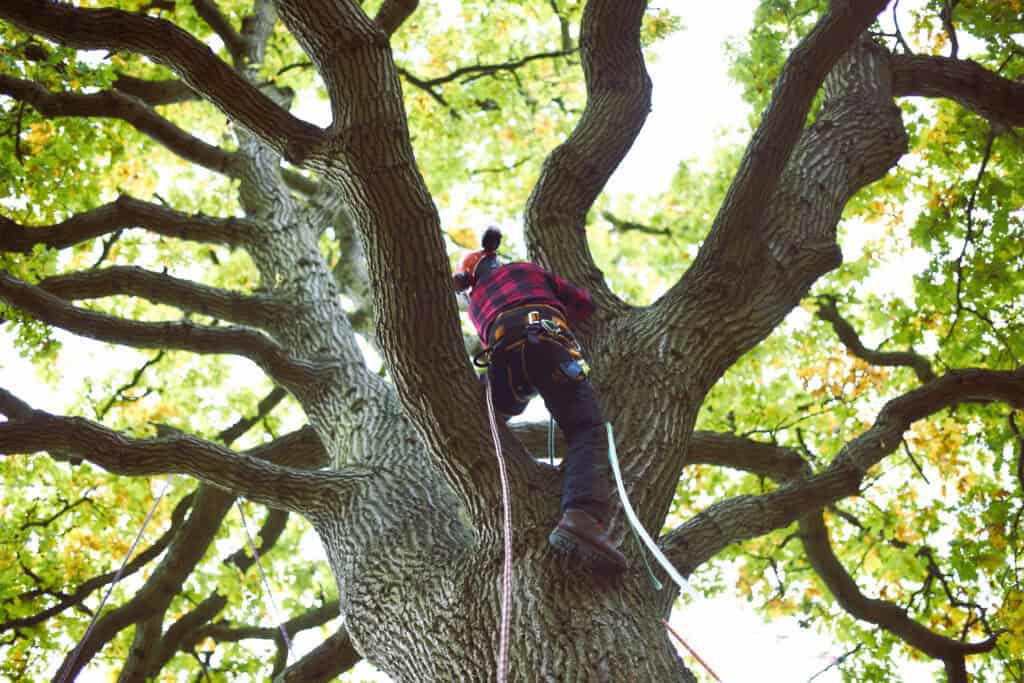
2. Prune Trees for Winter Health
Pruning trees before winter sets in helps prevent damage caused by heavy snow or ice. Removing dead, diseased, or weak branches reduces the weight on the tree, making it less likely to snap during a storm. A well-pruned tree is also better able to conserve energy during the winter, allowing it to flourish in the spring.
Pruning should be done carefully and with the right tools to avoid further damage:
- Cut away any branches that are dead, damaged, or diseased.
- Trim back long or low-hanging branches that may break under snow.
- Ensure proper spacing between branches to allow for wind and ice to pass through.
3. How to Mulch Around Trees for Winter
Mulching is one of the most effective ways to protect trees during the winter. Mulch helps insulate the tree’s roots, keeping them warmer during cold snaps. Additionally, mulch helps retain moisture, preventing the tree from drying out. While mulching is beneficial year-round, it’s particularly important during the colder months when trees need protection from freezing temperatures.
There are a few key considerations when mulching for winter:
- Spread mulch evenly around the tree’s base, but avoid piling it against the trunk.
- Use organic mulch like wood chips or straw for the best insulation.
- Keep mulch at least 2 to 4 inches deep to protect the roots.
4. Protecting Trees from Frost in Asheville
Frost can cause significant damage to trees, especially younger or newly planted ones. When frost settles on leaves and branches, it can lead to cell damage and reduce the tree’s ability to recover in the spring. Protecting trees from frost in Asheville is essential, especially during late fall and early winter when temperatures fluctuate.
Some practical ways to protect trees from frost include:
- Covering smaller trees with burlap or frost cloth when freezing temperatures are expected.
- Watering trees before a freeze, as hydrated trees are less likely to be damaged.
- Placing frost blankets or plastic sheets around the base of young trees.
5. Wrap Tree Trunks to Prevent Cracking
One of the most overlooked aspects of winter preparation is wrapping tree trunks. During the winter, tree trunks can suffer from frost cracking, which occurs when warm temperatures during the day cause the tree to expand, only for the cold night air to contract it rapidly. This expansion and contraction can cause the bark to split, leading to long-term damage.
Wrapping tree trunks is a simple, effective solution:
- Use commercial tree wrap or burlap to insulate the trunk.
- Wrap from the base to the first set of branches, ensuring a snug fit.
- Remove the wrap in the spring once temperatures begin to warm.
6. Watering Trees During Asheville’s Winter
Even though trees are dormant in the winter, they still need water. Winter drought can cause significant stress to trees, especially during prolonged periods without rain. Regular watering during dry spells can prevent dehydration and ensure the tree’s roots remain healthy throughout the season.
There are a few guidelines to follow for winter watering:
- Water trees during the warmest part of the day to avoid freezing.
- Ensure the soil is well-drained to prevent water from freezing around the roots.
- Focus on newly planted trees, as their root systems are less established.

When to Consult an Arborist for Winter Tree Care
Although many homeowners can handle basic winter preparation for trees, there are times when it’s best to call in a professional. Arborists have the tools, knowledge, and experience to handle more complex tree care needs. Whether it’s large tree pruning, pest management, or damage repair, an arborist can ensure trees receive the care they need.
Situations that call for professional help include:
- Large or hazardous trees that need significant pruning.
- Signs of disease or pest infestation that could worsen in winter.
- Trees near power lines or structures that could pose a danger.
Key Takeaways: How to Prepare Trees for Winter
Preparing trees for Asheville’s winter is essential for their health and longevity. Trees need protection from the cold, snow, and ice to thrive in the coming year. Winter preparation, including pruning, mulching, and wrapping trunks, ensures that trees are safe from winter’s harsh conditions.
- Inspect trees for damage before winter sets in.
- Prune trees to reduce the chance of branches breaking under snow and ice.
- Mulch and water trees to keep roots warm and hydrated.
- Protect trees from frost and wrap trunks to prevent cracking.
Frequently Asked Questions
1. Can I prune my trees in the middle of winter?
Yes, pruning can be done during winter, but it’s best to do it before heavy snow or ice arrives. Winter pruning can prevent damage from storms and helps shape trees for the upcoming growing season.
2. What type of mulch should I use around my trees?
Organic mulch, such as wood chips or straw, works best because it breaks down naturally and provides nutrients to the soil. Avoid using rocks or rubber mulch, as they don’t offer insulation.
3. Do I need to water my trees even if it’s cold outside?
Yes, trees still need water during the winter, especially if there hasn’t been much rainfall. Watering during dry winter periods ensures the tree’s roots stay hydrated and healthy.
4. How often should I inspect my trees during winter?
Inspect trees at least once a month to check for any signs of damage from wind, snow, or ice. After storms, it’s a good idea to check for broken branches or other issues.
5. When is the best time to call an arborist?
Call an arborist before winter starts if you have large trees that need significant pruning or if your trees show signs of disease or structural weakness.
Precision Arborcare is your trusted arborist for expert tree services in Asheville, NC. Built on a passion for trees and a commitment to providing top-quality arborist care, our company excels in technical skills while prioritizing clear communication, customer satisfaction, and safety. Our team consists of certified arborists and tree care professionals dedicated to enhancing and preserving the natural beauty of your landscape. We pride ourselves on being approachable, friendly, and professional arborists, ensuring that our clients feel confident and informed throughout every step of their tree care journey. Precision Arborcare offers tailored arborist services to meet the specific needs of each client, from routine maintenance and emergency tree services to specialized care for your trees.
